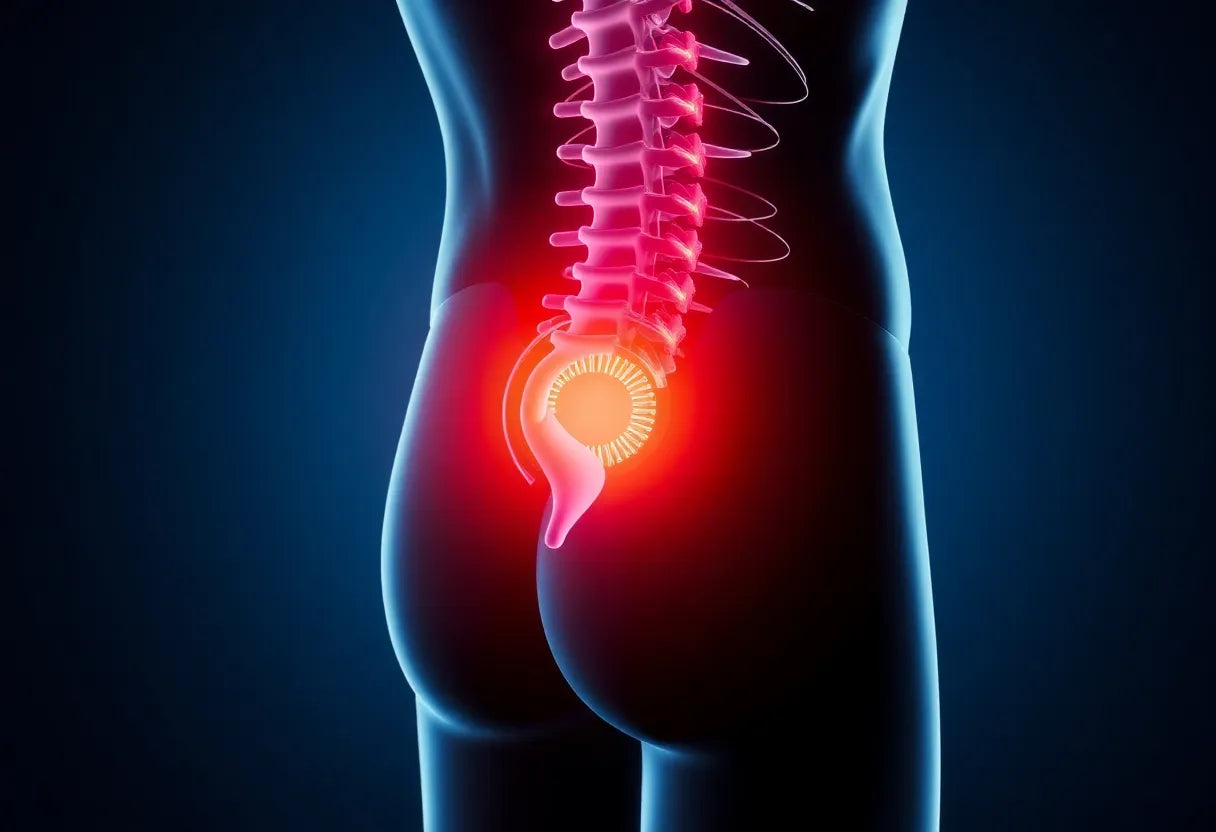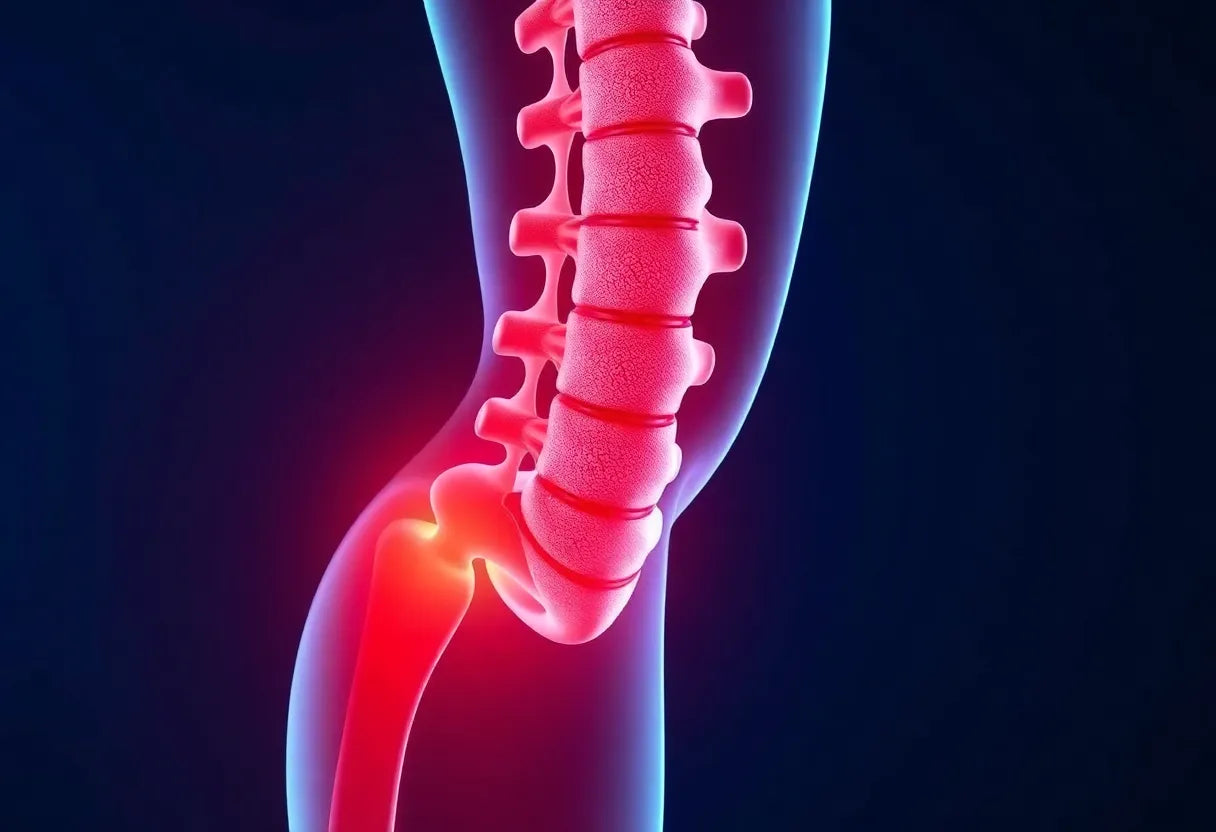Living with lumbar disc herniation (LDH) can be a challenging experience, often accompanied by persistent pain, limited mobility, and a noticeable decline in quality of life. This condition, commonly known as a slipped or ruptured disc, occurs when the soft inner gel of the disc protrudes through its outer layer, irritating nearby nerves. Symptoms can range from mild discomfort to severe pain, tingling, and numbness, significantly impacting daily activities and overall well-being.
LDH is a prevalent issue, affecting a substantial portion of the adult population worldwide. The demands of modern life, coupled with sedentary lifestyles and poor posture, contribute to its widespread occurrence. As a result, individuals suffering from this condition often struggle with routine tasks, finding it difficult to maintain an active and fulfilling lifestyle.
The role of exercise in managing lumbar disc herniation
In the quest for relief, many turn to exercise therapy as a non-invasive and effective approach to managing LDH symptoms. Exercise plays a crucial role in reducing pain and enhancing mobility, offering a promising alternative to more invasive treatment options. Unlike surgical interventions or medication, exercise therapy focuses on empowering individuals to take control of their condition through targeted movements and strengthening routines.
Scientific research supports the efficacy of exercise therapy for LDH, highlighting its benefits over other treatment modalities. Systematic reviews and meta-analyses consistently demonstrate that specific exercises can significantly alleviate pain, improve lumbar spine flexibility, and strengthen core muscles. This evidence-based approach not only addresses the physical symptoms but also contributes to an improved quality of life for those affected.

Lumbar support belt
Lower back support belt for stabilisation and relief — adjustable and ideal for disc herniation or sciatica.
The aim of this blog post is to delve into the world of effective lumbar disc exercises, providing insights and guidance to help individuals achieve pain-free living. By exploring a range of exercises tailored to the needs of those with LDH, we aim to offer practical solutions that can be seamlessly integrated into daily routines. Whether you're seeking to reduce pain, enhance mobility, or regain control over your life, understanding the right exercises can be a transformative step towards a healthier, more active future.
exercise efficacy and benefits for lumbar disc health
When it comes to managing lumbar disc herniation, exercise therapy stands out as a highly effective intervention. Numerous systematic reviews and meta-analyses have consistently confirmed the efficacy of exercise therapy in alleviating symptoms associated with lumbar disc issues. These studies highlight significant improvements in pain reduction, lumbar spine flexibility, core muscle strength, and overall quality of life for individuals with this condition.
One of the key benefits of exercise therapy is its ability to target specific areas of weakness and dysfunction. By focusing on strengthening the core muscles, particularly the transversus abdominis and multifidus, individuals can enhance the stability and support of the lumbar spine. This targeted approach not only reduces pain but also improves functional mobility, allowing individuals to engage in daily activities with greater ease and comfort.
effective exercises for lumbar disc health
There are several types of exercises that have proven to be particularly effective for individuals with lumbar disc herniation. Among these, extension-based exercises, such as prone press-ups, are highly recommended. These exercises help alleviate chronic axial low back pain by promoting spinal extension and reducing pressure on the affected discs.
Strengthening exercises play a crucial role in managing lumbar disc issues. By targeting the deep abdominal and hip muscles, individuals can improve their overall core strength and stability. This not only supports the lumbar spine but also reduces the risk of further injury or discomfort.
Core stabilization and proprioceptive training are also essential components of an effective exercise regimen for lumbar disc health. These exercises enhance lumbar stability and coordination, allowing individuals to maintain proper posture and movement patterns during daily activities.
exercise parameters for optimal results
To achieve optimal results from lumbar disc exercises, it is important to consider the frequency, duration, and intensity of the exercise program. Research suggests that exercising at least twice weekly is necessary for significant improvements in pain reduction and mobility. Programs lasting between 2 to 12 weeks have shown the most measurable benefits, while shorter programs tend to be less effective.
Moderate intensity is generally recommended for lumbar disc exercises to ensure safety, especially for elderly patients. High-intensity training should be avoided due to the potential risk of joint damage. By adhering to these exercise parameters, individuals can safely and effectively manage their lumbar disc symptoms.
Patient outcomes from exercise interventions have been promising, with improved scores on pain scales, such as the Visual Analog Scale, and disability indices, like the Oswestry Disability Index. These improvements translate to an enhanced quality of life, allowing individuals to regain control over their daily activities and reduce the impact of lumbar disc herniation on their overall well-being.
Addressing evidence gaps and personalized exercise plans
While the benefits of lumbar disc exercises are well-documented, there remains a lack of consensus regarding the optimal type, intensity, and frequency of these exercises. This gap in evidence highlights the importance of personalized exercise plans tailored to individual needs and conditions. Every patient is unique, and factors such as age, severity of symptoms, and overall health can influence the most effective approach to exercise therapy.
To address these individual differences, it is crucial to develop a personalized exercise regimen. This plan should consider the patient's specific condition and goals, ensuring that exercises are both effective and safe. Consulting with a healthcare professional or physical therapist can provide valuable guidance in creating a tailored program that maximizes benefits while minimizing risks.
Practical advice for patients
Implementing a structured exercise routine can significantly aid in managing lumbar disc herniation. Below are some recommended exercises, along with step-by-step instructions and safety tips:
- Prone Press-Up: Lie face down with your hands under your shoulders. Slowly press your upper body up, keeping your hips on the floor. Hold for a few seconds, then lower back down. Repeat 10-15 times.
- Lumbar Stabilization: Lie on your back with your knees bent and feet flat on the floor. Tighten your abdominal muscles and lift your hips to form a straight line from shoulders to knees. Hold for 5-10 seconds and repeat 10 times.
- Core Strengthening: Perform planks by lying face down, propping yourself up on your forearms and toes. Keep your body straight and hold the position for 20-30 seconds, gradually increasing the duration as you build strength.
To ensure safety and progression, start with low repetitions and gradually increase as your strength and endurance improve. Always listen to your body and avoid any exercise that causes pain. If uncertain about your form, consider seeking advice from a physical therapist or using instructional videos to guide you.
Frequently Asked Questions
What are the best exercises for lumbar disc herniation?
Effective exercises include extension-based movements like prone press-ups, core strengthening exercises such as planks, and stabilization exercises to enhance lumbar support and flexibility.
How often should I perform lumbar disc exercises?
For optimal results, it is recommended to perform these exercises at least twice a week. Consistency is key to experiencing significant improvements in pain and mobility.
Can exercises completely cure lumbar disc herniation?
While exercises can substantially reduce symptoms and improve quality of life, they may not completely cure lumbar disc herniation. They are most effective as part of a comprehensive management plan.
Are there any exercises I should avoid with lumbar disc herniation?
It is advisable to avoid high-intensity exercises and certain flexion-based movements unless supervised by a professional, as these can exacerbate symptoms.
How can I ensure I'm performing exercises correctly?
To ensure proper form and technique, consider consulting with a physical therapist or utilizing instructional videos. This guidance can help prevent injury and maximize the effectiveness of your exercise routine.
By incorporating these exercises into your routine and following personalized guidance, you can effectively manage lumbar disc herniation and work towards a pain-free life. Remember, consistency and proper technique are vital to achieving the best outcomes.

Men's Posture Shirt™ - Black
Posture correcting t-shirt for men; patented design supports muscles and may relieve tensions.
Källor
- Author(s). (Year). "Title of the article." Journal Name.
- Mainstay Medical. (n.d.). "Exercises for Herniated Disc in Lower Back." Mainstay Medical.
- Ohio State University Wexner Medical Center. (2022). "Lumbar Discectomy." Ohio State Spine Care.
- Massachusetts General Hospital. (n.d.). "Rehabilitation Protocol for Lumbar Spine Disc Displacement." Massachusetts General Hospital.
- American Academy of Orthopaedic Surgeons. (2017). "Rehabilitation for Spine." AAOS.
- South Shore Orthopedics. (2016). "Lumbar Disc Herniation." South Shore Orthopedics.
- Mayo Clinic Staff. (n.d.). "Back Pain." Mayo Clinic.
- Author(s). (Year). "Title of the article." Journal Name.
- Medical News Today. (n.d.). "Article Title." Medical News Today.
- American Academy of Orthopaedic Surgeons. (n.d.). "Low Back Surgery Exercise Guide." AAOS.























